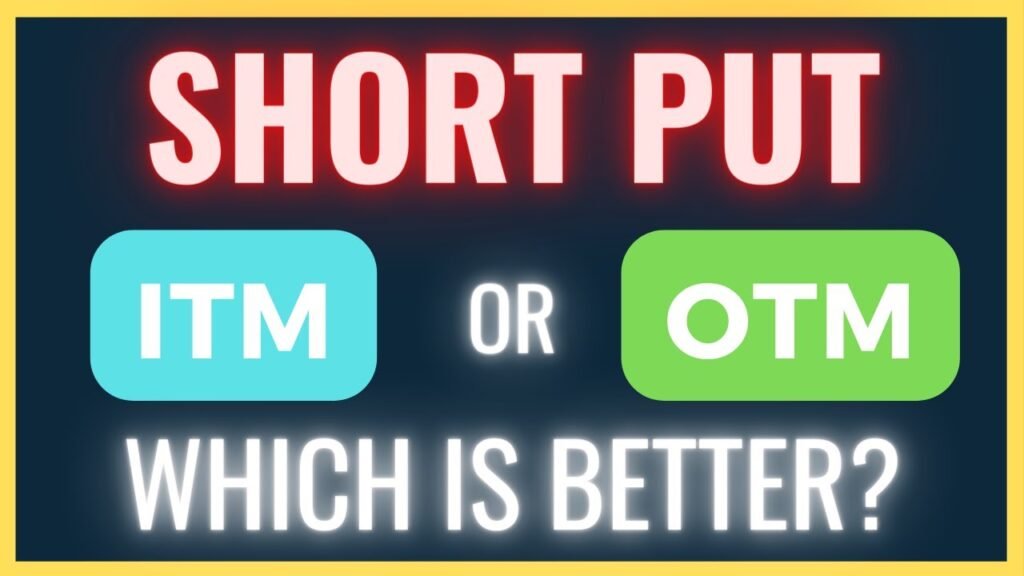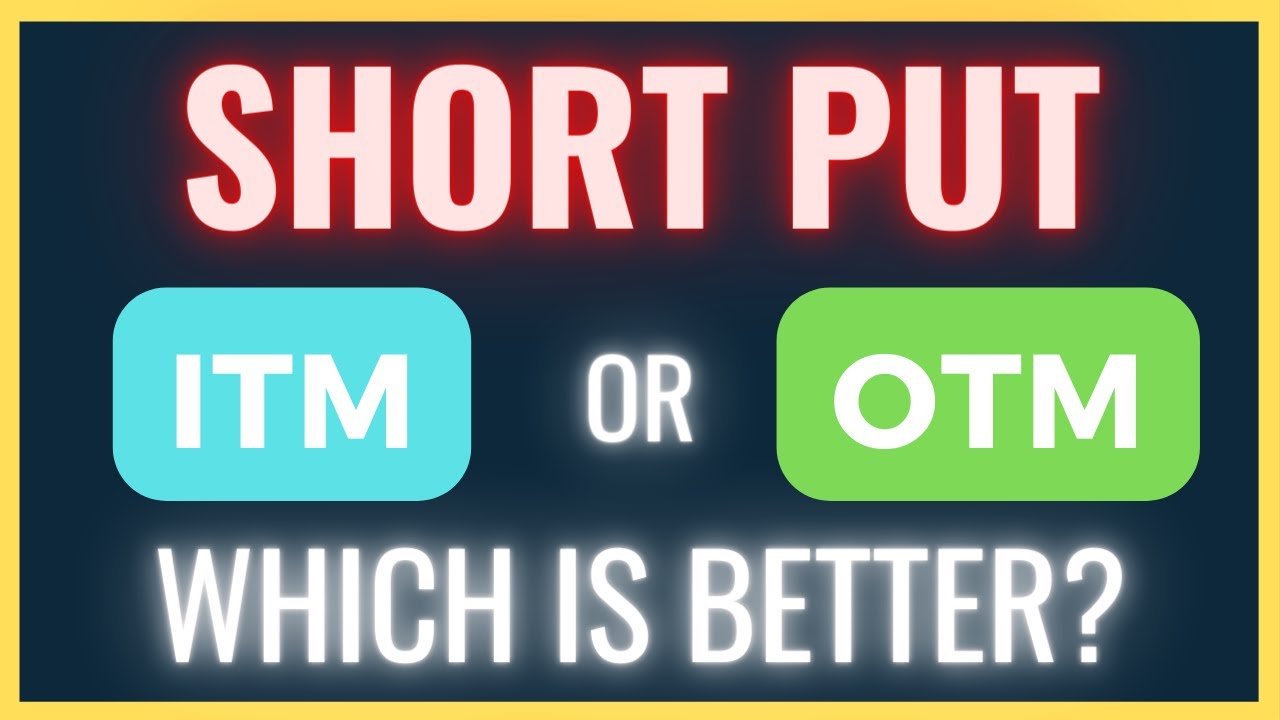Hey there! In the video titled “Short Put Strategy – Is Selling OTM or ITM Put Options Better?” by Options with Davis, the Short Put Strategy is discussed, specifically comparing the pros and cons of selling In-The-Money (ITM) and Out-of-The-Money (OTM) Put Options. The video explains that selling ITM Put Options can yield a higher premium and return on investment (ROI), but with a lower win rate. On the other hand, selling OTM Put Options has a higher probability of winning, but the premium and ROI are lower. The video provides timestamps for different sections and encourages viewers to like the video, leave comments, and ask questions. The content is aimed at beginners in options trading and stock investing, emphasizing the importance of technical analysis skills and considering factors like stock direction and technical indicators when choosing strike prices.
I. Introduction
In options trading, there is a strategy known as the Short Put Strategy where investors can sell put options and potentially profit from the premium received. However, when it comes to choosing which put options to sell, there are two main types to consider: out-of-the-money (OTM) put options and in-the-money (ITM) put options. Both options have their advantages and disadvantages, and in this article, we will explore the differences between these options and the factors to consider when deciding which one to sell.
II. Defining OTM & ITM Put Options

A. Difference between out-of-the-money and in-the-money put options
Out-of-the-money put options are those with strike prices below the current market price of the underlying stock. In contrast, in-the-money put options are those with strike prices above the current market price. The main difference between the two is their intrinsic value.
B. Explanation of intrinsic value and extrinsic value
Intrinsic value is the value that an option has if it were to be exercised immediately. It is the difference between the current market price and the strike price of the option. On the other hand, extrinsic value, also known as time value, is the value of the option beyond its intrinsic value. It represents the potential for future movement in the stock price before expiration.
C. Intrinsic and extrinsic value in ITM and OTM options
For ITM put options, both intrinsic and extrinsic values exist. The intrinsic value is positive because the strike price is higher than the current market price. Meanwhile, for OTM put options, there is no intrinsic value as the strike price is lower than the current market price. The value of these options solely comes from their extrinsic value.
III. Main Difference between OTM & ITM Put Options
A. Potential capital gains in ITM options
One significant advantage of selling ITM put options is the potential for capital gains. If the stock price increases and reaches or exceeds the strike price, the option seller can profit from both the intrinsic and extrinsic value of the option. This is similar to buying the stock at a lower price and selling it at a higher price.
B. Higher win rates in OTM options
On the other hand, selling OTM put options generally offers higher win rates. Since these options have a higher chance of expiring worthless, the option seller has a greater probability of keeping the entire premium received. While the premium and potential profits may be lower compared to ITM options, the frequency of successful trades tends to be higher.
C. Profit and loss graphs for both types of put options
To visualize the potential outcomes of selling ITM and OTM put options, profit and loss graphs can be used. These graphs display the potential profits or losses at expiration based on various stock price levels. The shape of the graph differs for ITM and OTM options, reflecting their intrinsic and extrinsic values.
IV. Tradeoff between OTM & ITM Put Options
A. Factors to consider in choosing the strike price
When choosing between OTM and ITM put options, the strike price plays a crucial role. Factors to consider include the current market price of the underlying stock, the investor’s risk tolerance, and the desired potential for capital gains. A more conservative investor may choose ITM options for a higher level of downside protection, while a more aggressive investor may prefer OTM options for potentially higher premiums and win rates.
B. Impact of direction of the stock and technical indicators
The direction of the stock and technical indicators should also be taken into account when deciding between OTM and ITM put options. If the investor expects the stock price to rebound or move in a certain direction, ITM options may be more suitable as they offer potential capital gains. On the other hand, if the stock is sideways or expected to remain below the strike price, OTM options may provide higher win rates.
C. Premium and return on investment (ROI) comparison
In comparing OTM and ITM put options, the premium and return on investment (ROI) must be considered. While selling ITM put options can result in larger premiums, the ROI may be lower due to the higher risk involved. OTM put options, although offering smaller premiums, can provide a higher ROI if the win rate is consistently favorable.
V. When to Sell OTM & ITM Put Options
A. Market conditions and expected price movements
The decision to sell OTM or ITM put options depends on market conditions and the investor’s expectations for price movements. If the market is volatile or expected to experience substantial price swings, selling ITM put options may be more suitable. Alternatively, in a stable market with limited expected movements, selling OTM put options can provide a higher probability of success.
B. Holding onto investments in the long term
Another consideration is the investor’s stance on holding onto investments for the long term. If the investor is open to the possibility of acquiring the underlying stock at the strike price, selling ITM put options can serve as a strategy to potentially buy the stock at a lower price. This approach aligns with a long-term investment mindset.
C. Deciding when to exit an investment
Knowing when to exit an investment is crucial in options trading. Both OTM and ITM put options should be evaluated based on the investor’s exit strategy. For ITM options, the decision to exit may be triggered by achieving the desired capital gains. OTM options, on the other hand, may be held until near expiration to allow the extrinsic value to decay and maximize the premium received.
D. Decay of premium and realizing full value
Investors holding OTM put options with the intention of realizing their full value should be aware of the decay of premium. As time passes, the extrinsic value of the option decreases, which can lead to diminishing potential profits. It is essential to manage positions and ensure that the potential decay does not significantly impact the desired outcome.
E. Prioritizing income and using indicators
If generating income through regular premiums is a priority, selling OTM put options may be more suitable. The higher win rates associated with OTM options provide a consistent stream of income, albeit smaller than ITM options. Technical indicators can be useful tools in determining market conditions and selecting the appropriate strategies for income generation.
VI. Importance of Technical Analysis Skills
To successfully implement options trading strategies, particularly when choosing between OTM and ITM put options, having technical analysis skills is essential. Technical analysis involves the use of historical price and volume data to identify patterns and trends in the market. By applying technical analysis, investors can gain insights into potential price movements and make more informed decisions regarding strike prices and timing.
VII. Starting with OTM Put Options
For beginners in options trading, starting with OTM put options can be a less risky approach. The higher win rates associated with OTM options provide a greater chance of success, boosting confidence and building experience. As traders become more comfortable with the strategy, they can gradually explore ITM put options and capitalize on potential capital gains.
VIII. Exploring ITM Put Options
As traders gain experience and confidence, exploring ITM put options becomes a viable option. ITM options offer the potential for capital gains, similar to buying and selling stocks. However, traders must carefully consider the strike price, market conditions, and technical indicators to maximize their chances of success.
IX. Conclusion
When it comes to selling put options, the choice between OTM and ITM options boils down to the investor’s risk tolerance, desired potential gains, and market expectations. OTM options provide higher win rates but lower premiums, while ITM options offer potential capital gains but with a higher risk of losing the entire premium. It is crucial to analyze market conditions, consider technical indicators, and constantly review and refine strategies to optimize returns. By understanding these differences and tradeoffs, investors can make informed decisions when selling OTM or ITM put options.
